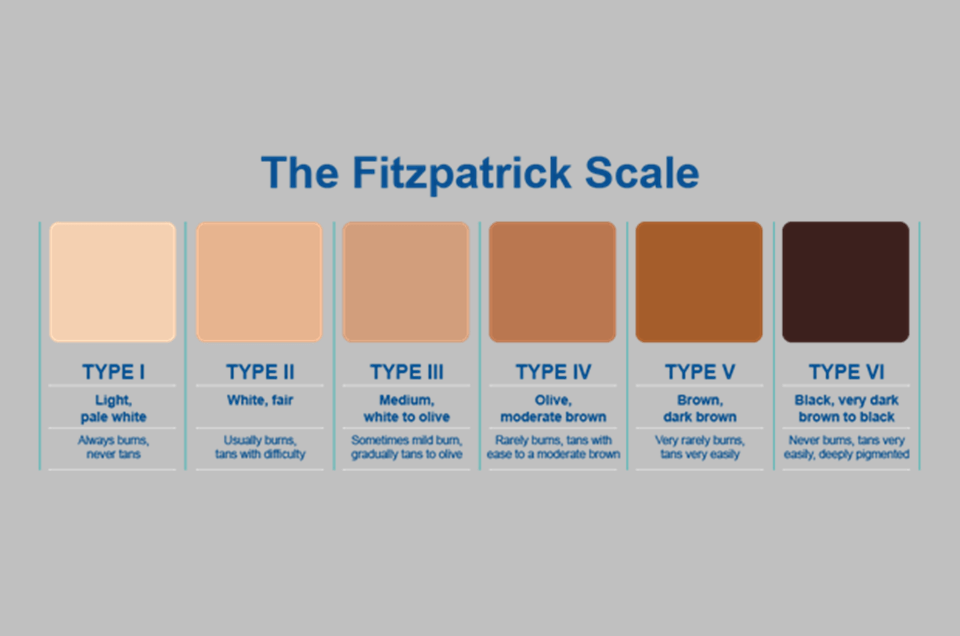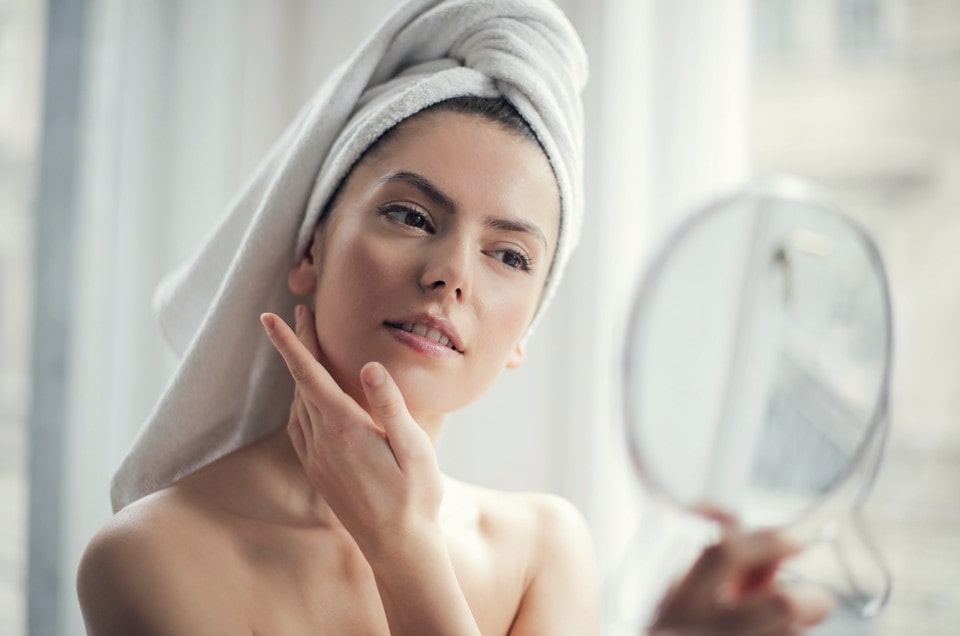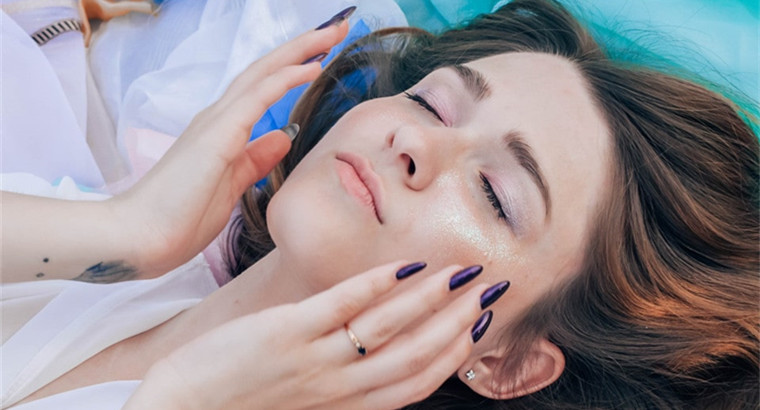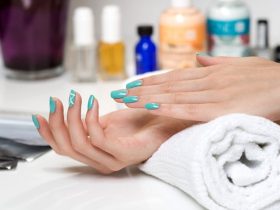Olives are likely to remind you of the Mediterranean — lying on the beach, sunkissed, and ready to get some tan. Spray some olive oil and you’ll be showing off your olive skin tone in no time, right? Wrong, actually. Though you might be able to achieve a perfect bronze shade, you still wouldn’t get an olive tone — not unless you already have it. To see what we mean, read on.
What Is Olive Skin Tone?

Image source: Pinterest
So, what’s the deal? Why can’t you get this perfect-sounding tan? As you might’ve figured by now, olive skin has everything to do with genetics and nothing to do with you being in the sun all day.
In other words, what we mean by olive skin is a unique skin type that is inborn and cannot be acquired. You couldn’t change the skin you’re born with even if you wanted to — not unless you’re the King of Pop with vitiligo, anyway.
And we aren’t talking about the black olive color, either. In fact, this skin type isn’t necessarily dark. What’s so special about olive skin tone is its underlying green tone that resembles a green olive.
Put differently, people born with such skin have a blue or cold undertone and a yellowish overtone. The unique combination results in a somewhat green touch to their skin. Naturally, we’re talking subtle green, not Shrek’s green.
But before we go on, let’s dive into the science behind this for a bit.
The Fitzpatrick Scale

Image source: Pinterest
Yes, we know we said this had nothing to do with lying in the sun. But the truth is, a little bit of sun can help you see things more clearly.
The Fitzpatrick skin phototype provides a skin classification based on its reaction to sunlight. In other words, this scale classifies skin into the following six groups:
• Type I pigmentation. The skin is pale white — it always burns and never tans.
• Type II pigmentation. The skin is medium white — it burns easily and tans only slightly.
• Type III pigmentation. The skin is darker white — it first burns, then tans.
• Type IV pigmentation. The skin is light brown — it easily tans and only slightly burns.
• Type V pigmentation. The skin is medium brown — it tans darkly easily and rarely burns.
• Type VI pigmentation. The skin is darker brown or almost black — it always tans darkly and never burns.
Olive skin tone can range from type III to type V on the Fitzpatrick scale. Therefore, it can cover both darker white and light brownish or brown skin types. As you can see, this underlying green tone isn’t dependent on skin color per se.
Which Nationalities Have Olive Skin?
Since olive tone ranges from darker white to medium brown skin, does this mean certain nationalities are more likely to have it? The fact is, people with olive skin can be scattered pretty much all over the globe. Ranging from India across the Mediterranean to Latin America, their greenish nuance gives some color to our black and white world.
Still, olive skin does get associated with certain ethnicities. It seems that Mediterranean countries like Greece, Italy, Spain, Turkey, France, and Egypt are more likely to have olive-toned people walking around. They usually fall under type III skin tone, having a fairer complexion.
On the other hand, slightly darker olive tones can be found in some parts of Latin America and Asia (type IV), while the darkest olive complexions belong to the Middle Easterners as well as to some people in Africa and the Indian subcontinent (type V).
What Determines Your Skin Color?

The pigment that is responsible for your hair, eye, and skin color is called melanin. In other words, its presence in your body dictates whether you will be born with a light or a dark skin tone, among other things. Naturally, when it comes to your inborn melanin levels, you have your genetics to thank for your unique complexion.
The amount of melanin in your body also determines how your skin reacts to the UV rays coming from the sun. Put differently, this is what classifies your skin as belonging to one skin type on the Fitzpatrick scale instead of some other.
Still, you need to differentiate between your skin tone, your skin undertone, and your skin overtone. Unlike your skin tone, which can change after its exposure to sunlight, your undertone always stays intact. In other words, this is the permanent underlying shade of your skin, which can be:
• cool — blue or pink colors
• warm — yellow, peachy, or golden colors
• neutral — a mix of the two
On top of that, your skin overtone combines with your cool, warm, or neutral undertone, giving a final touch to your skin. For instance, if you have a warm undertone and a pinky overtone, your skin will seem somewhat peachy. Or, if your undertone is cool and your overtone yellowish, what you get is your olive skin tone.
How to Tell If You Have Olive Skin Tone

Image source: Pinterest
What makes olive skin so unique is that it seems more difficult to define it. As we’ve already seen, you can have either a fair or a dark complexion and still have olive skin. On top of that, your skin can have underlying peachy, golden, or blue tones and still fall under the olive type.
So, is there a way to find out whether you have it? In case you suspect your skin to be olive, take the following tests to know for sure.
1. The Mirror Test
One of the most obvious ways to find out whether you have olive skin is to take a look at yourself in the mirror. In particular, pay special attention to those areas which don’t get exposed to sunlight that often. Do you notice a green or grayish color on your chest or inner thighs? If so, you might be on the right track.
2. The Vain Test
This test is the most popular when it comes to determining your skin undertone, so go ahead and look at your veins. But first, make sure you’re outside, in the natural light, because artificial lights can alter the colors of your veins. Do you see a distinct green or blue? If you find this tricky to determine, it might be because of your olive skin.
3. The Nude Lipstick Test
Even if you’ve never worn it, try putting on a white-based or nude shade of lipstick. Are you happy with it? Or does it look like you’re back to preschool trying on your mom’s make-up? If it feels weird no matter the exact nude shade, your olive skin may be the one to blame.
4. The Pastel Clothes Test
Who hasn’t filled their wardrobe with pastel-colored clothes for the upcoming summer? Still, you might be only storing your new pastel tops there until you’ve managed to get some tan. In fact, it doesn’t matter whether your complexion is fair or dark. If pastel colors seem off on you, they might just be blending with the similar shades of your olive skin.
5. The Foundation Test
Is it hard for you to find the perfect shade of foundation? Do you always happen to turn yellow, orange, or even pink when you put it on? Your olive skin tone might be the culprit. Next time, try to look for gray or green tones in a foundation and you’ll be happier with the result.
6. The Jewelry Test
Do both silver and gold pieces of jewelry bring out the best in you? Can you pull off rose-gold as well? If so, it may be thanks to the uniqueness of your olive skin, which goes well with any jewelry. What’s more, the two seem to complement each other’s shades perfectly.
In case the above tests have helped you notice your olive complexion, you might be feeling eager to find out how to take proper care of your unique skin.
Advantages and Disadvantages of Having Olive Skin Tone
You may still not be aware of your skin’s uniqueness, given that you’ve only just found out your tone. Still, only when you know your skin’s needs can you provide it with adequate care.
When it comes to the advantages of having olive skin, you might be aware that melanin is your best friend. As we’ve already mentioned, olive skin is likely to be richer in this pigment, which makes you able to get a perfect tan without getting sunburns.
However, your olive skin can also be causing you a lot of trouble. Especially because of higher melanin levels, you might experience your skin overreacting in a way. It will tend to show off its unique defense mechanisms even at the slightest irritation, leaving you with excess oil, blemishes, and dark spots.
How to Care for Olive Skin

Below, we offer you a few tips on how to nourish your olive skin.
1. Wash Your Face With Water
Always remember to wash your face with only water right after you wake up. Over the night, your olive skin is likely to get even more oily than usual. To avoid clogging up the pores, wash the oil off your face. Still, steer clear from using soap, as it will only dry your skin. And don’t forget to repeat this before going to bed at night.
2. Cleanse Your Skin With a Toner
Because olive skin is famous for the overproduction of oil, you’ll need to pay special attention to the areas around your nose and your forehead. Putting some toner on a cotton pad will help you remove the excess oil from these zones. This way, your skin will be safe from acne but will still have its natural olive glow.
3. Use Moisturizer
Applying moisturizer to your skin is still important even when you have oily olive skin. After you’ve cleaned your face, make sure to use a moisturizing cream to keep it healthy and hydrated, especially over the night. The cream will help your skin preserve its elasticity while keeping it shiny.
4. Don’t Forget to Exfoliate
Having oily olive skin doesn’t mean you don’t have to take care of dead cells. Exfoliating helps break the bonds holding dead cells attached to the surface of your skin. As a result, your young cells get to come and enjoy the stage for a bit. Then, your natural olive tone should be even more visible.
5. Always Use Sunscreen
By now, you must know it by heart — high melanin concentrations mean high resistance to sunburns, right? Even so, don’t forget to put on at least some sunscreen on your face before exposing it to sunlight.
Sunscreens protect your skin from violent UV rays that could otherwise do damage to your skin. So make sure to check which pigmentation type your olive skin belongs to on the Fitzpatrick scale, and apply sunscreen accordingly.
Skin Care Products for Olive Skin
As you won’t be able to take proper care of your olive skin without the right skincare products, we offer you some ideas below:
• Neutrogena Oil-Free Acne-Fighting Face Wash. This cleanser contains 2 percent salicylic acid, which makes it keep your skin free of blackheads and acne by opening up your pores.
• Aveeno Clear Complexion Foaming Cleanser. On top of containing salicylic acid, this product also evens up your skin tone with the help of soy.
• L’Oréal Paris Pure-Sugar Scrub. This cream contains three different types of sugars, which help exfoliate your olive skin and give it the perfect natural glow.
• Differin Daily Deep Cleanser. This cleanser is perfect for oily skin because it contains 5 percent benzoyl peroxide, which dives deep into your pores, preventing their clogging and removing excess oil.
• Acure Brightening Facial Scrub. You’ll love this product because it contains clay, which helps purify your skin and bring out its natural glow.
• Aquaholic Overnight Water Mask. This cream will help your skin stay hydrated overnight and make it feel soft and shiny in the morning.
What Makeup to Use for Olive Skin
Besides proper care, your special skin type deserves a bit of color. Our advice is to avoid oily products. Also, steer clear of inadequate foundation that makes you look pink or yellow. Instead, try to use fairer powder foundation to achieve the matte effect. Still, don’t forget to put on the right shade of concealer to cover up the blemishes.
When it comes to giving the final touch to your whole look, you can always experiment. Pastel eye shadows will look natural on you. On top of that, earthy and natural shades will complement your skin tone perfectly. To make your cheekbones stand out, try to use a coral blush instead of a pink one. This shade will do wonders when mixed with your skin’s unique hues.
Final Thoughts
As you’ve already figured, even if you lie in the sun all day, you won’t be able to achieve the perfect olive skin tone. This unique type of skin is inborn, so, unless you already have it, you can’t just get it.
People with olive skin have a blue undertone and a yellow overtone, which makes their complexion appear greenish on the surface. If you have it, we hope the products and tips we offered will make your skin glow even brighter than before.










